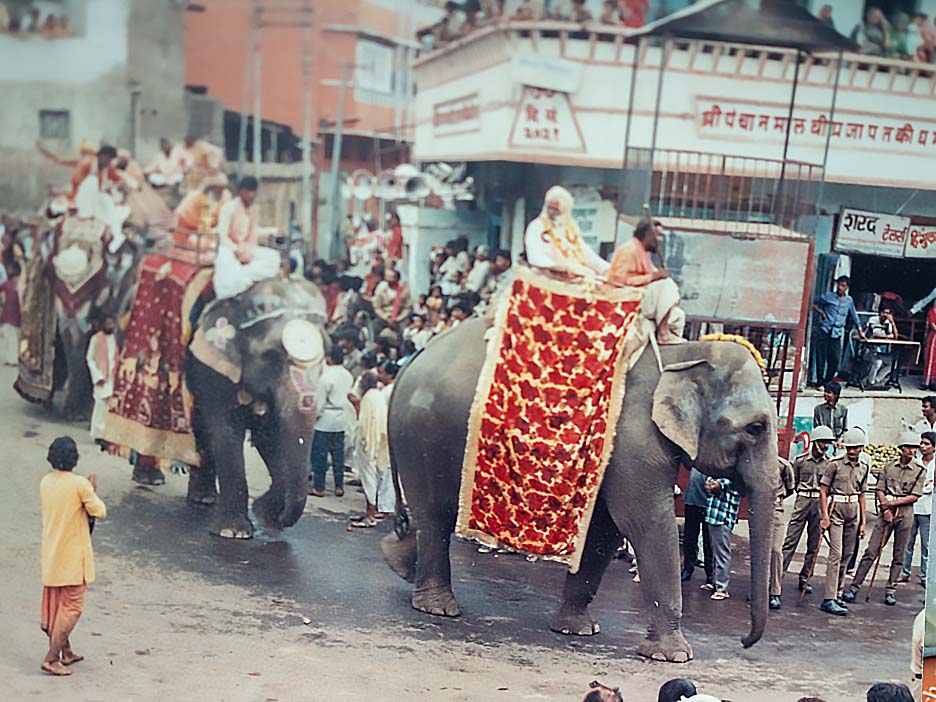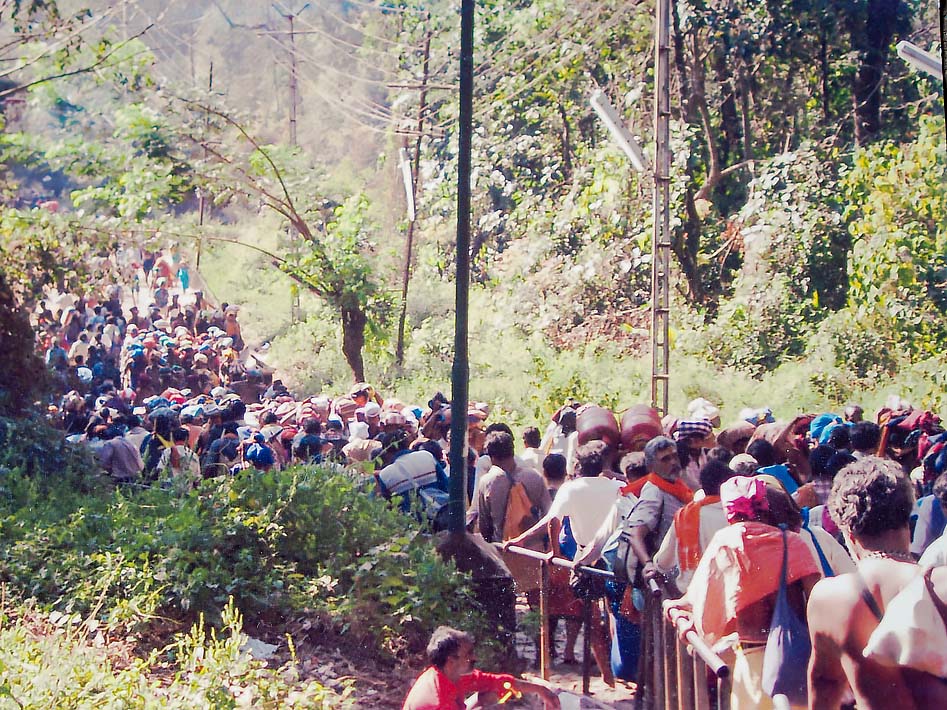Research into religious pluralism within the Indian context

In the vein of Italozazen, the narrative unfolds not merely as a travelogue, but as a tapestry of cultural immersion and philosophical inquiry. Mr. Italozazen, in his odyssey through the Indian subcontinent, assumes the role of an ethnographer, meticulously chronicling the variegated fabric of spiritual practices. The Kumbh Mela, not merely a festival but a confluence of the devout, becomes a tableau vivant for the exploration of consciousness.
In 1989 at Allahabad and again in 1993 at Ujjain, the Kumbh Mela transcended the boundaries of a mere event; it became a microcosm of a transcultural pilgrimage. The juxtaposition of Italozazen’s secular origins against the backdrop of these ancient spiritual gatherings illuminates the contrast between the consumerist world and the ascetic life. During his time at Ujjain, Mr. Italozazen’s experiences wove a rich tapestry of spiritual and cultural immersion. He rented a room, a humble abode shared with fellow travelers, where the daily procession of religious groups offered a visual feast of devotion in motion.
In this vibrant milieu, Mr. Italozazen sought to deepen his connection to Indian culture through music, employing a local sitar player to teach him the intricacies of the instrument. These lessons, set against the backdrop of the festival’s ceaseless hum, became a daily rite as sacred as the rituals unfolding around him. The sitar’s strings, under his diligent practice, sang of a seeker’s journey towards harmony with the divine.
The evenings were rich with profound conversations, where Mr. Italozazen and his companions delved into the depths of spirituality. These dialogues, often stretching into the night, were not mere exchanges of words but were akin to the confluence of rivers at the Mela—distinct streams of thought and experience merging into a larger quest for truth.
Most captivating were his encounters with the Naga Babas. Mr. Italozazen sat with many such groups, drawn into the orbit of their sacred fires. The ritual of fire, an elemental force in Hinduism symbolizing transformation, became a crucible for his own spiritual metamorphosis. As the flames danced and crackled, so too did the boundaries of his consciousness, entranced by the primordial energy of the gathering.
These experiences at the Kumbh Mela, from the strumming of sitar strings to the profound nocturnal discourses, from the daily spectacles of faith to the fiery communion with the Naga Babas, were not merely moments in time but waypoints in the odyssey of Mr. Italozazen’s spirit. They were instances where the secular and the sacred, the personal and the universal, the transient and the eternal, all converged, offering glimpses into the boundless realm of the spiritual awakening he sought.
This was not a deterministic yogic journey but an eclectic quest, a rekindling of academic fervor post his tenure with the Brahma Kumaris, seeking to distill the essence of life as a pilgrim enriched by diverse philosophical currents.
An eclectic pilgrim within the Australian context.
In the spirit of Italozazen, let us recount the transformative journey from the vibrant chaos of India to the tranquil rainforests of Kuranda. Upon my return, the essence of India was not merely a memory but a pulsating rhythm within me. Brisbane was but a brief interlude before I was drawn to the verdant embrace of Kuranda, where I established a studio amidst a commune that echoed the free-spirited ethos of a hippie sanctuary.
Within the eclectic tapestry of spiritual India that Mr. Italozazen navigated, there emerged a scene that was perhaps the most vivid embodiment of the Western interpretation of Eastern mysticism—the trance dance yogic gatherings. Here, the structure and discipline traditionally associated with yogic practice gave way to a more expressionist form of spiritual pursuit. The seekers, many from lands afar, found themselves immersed in the pulsating beats of electronic music, which, paired with the ancient rhythms of India, created a synesthetic experience of dance and devotion. This was spirituality expressed not through silent meditation but through the kinetic energy of bodies moving in unison, a collective journey through sound and movement that could stretch into the timeless.
It was against this backdrop of high energy and technologically infused rhythms that Mr. Italozazen found himself at Marry Farms, in the spiritual community of Sathya Sai Baba. This project was a manifestation of youthful idealism, a dream woven into reality by the serendipitous twist of fate that had transformed a young man’s accident into a wellspring of opportunity. The community that flourished there was a microcosm of the Hindu diaspora, a place where ideologies and practices intermingled freely.
In this haven, the air was thick with the scent of incense and the sound of devotional chants, as followers of ISKCON lost themselves in the names of Krishna and Rama. The silence of Osho’s meditators punctuated the space with a profound presence, while the disciplined postures of Hatha yoga practitioners spoke of a physical commitment to the path of self-realization. And amidst it all, the philosophical discourses of Vivekananda’s adherents added layers of intellectual inquiry to the spiritual exploration.
The embrace of electronic techno music, especially within the Australian ‘bush doof’ culture, can be viewed as an extension of this dynamic meditation. ‘Bush doofs’ — outdoor dance events in natural settings — are not just revelries of sound and movement; they are, in essence, communal meditations in motion. The pulsating rhythms and the collective experience of dance in the Australian bush serve a similar purpose to Osho’s dynamic meditation — they are rituals of release and renewal, facilitating a communal journey towards a collective trance state.
In this context, electronic techno music becomes a modern conduit for ecstatic experience, a technological shamanism that drives the mind beyond the mundane towards the mystical. For adherents of Osho’s dynamic meditation, the ‘bush doof’ can be a modern arena of transformation, where the vibrational energy of music mediates a journey inward, offering a contemporary path to transcendence that complements the ancient practice of silent meditation.
Thus, the juxtaposition of silent spaces filled with the presence of Osho’s meditators against the backdrop of the Australian bush energized by electronic beats encapsulates a larger narrative — a narrative that speaks to the essential human quest for inner peace and outer expression, a testament to the syncretic spiritual journey that defines the modern seeker. Mr. Italozazen, with his intimate understanding of the syncretic, would likely appreciate the interplay of these forms of meditation as a metaphor for the continuous dialogue between tradition and innovation in the pursuit of spiritual and artistic wholeness.
For Mr. Italozazen, this convergence of paths was a living library of spiritual expression. Each encounter, whether it was a shared dance under the open sky or a deep conversation seated in the lotus position, was a page turned in the vast book of human pursuit of the divine. The unstructured yoga of the trance dance scene, with its relentless energy and desire for transcendence, contrasted sharply with the serene contemplation of Sathya Sai Baba’s enclave, yet both were integral to the mosaic of experiences that shaped his understanding of Hindu spirituality.
In this narrative, Mr. Italozazen’s journey through the spiritual landscapes of India is a testament to the syncretic methodologies employed by the yogi and internationalist.
This contrasted starkly with my Brisbane days, where sonic harmonics and the contemplative practices of Tibetan Buddhism and Zen shaped my spiritual pursuits. Yet, in Kuranda, I found echoes of my time with the Brahma Kumaris, a blend of rigorous spiritual discipline and a hint of Hindu nationalism.
It was amidst this tapestry of beliefs and practices that the call of the pilgrim’s path beckoned once more. A whimsical opportunity arose to embark on a journey with a donkey as my companion, a nod to the timeless tradition of pilgrimage that promised a life unshackled by the mundane, a nomadic existence that favored the rhythm of the earth and the spontaneity of the moment over any fixed destination.
This chapter of wanderlust, however, eventually gave way to a return to academia in Brisbane, where I delved into the realms of philosophy and religion from 1998 to 2003. Yet the pilgrim soul within me stirred again, and in 2004, I was drawn back to India’s sacred soil, in pursuit of an authentic pilgrimage, a quest for the profound that would once again redefine the contours of my life as Italozazen.
